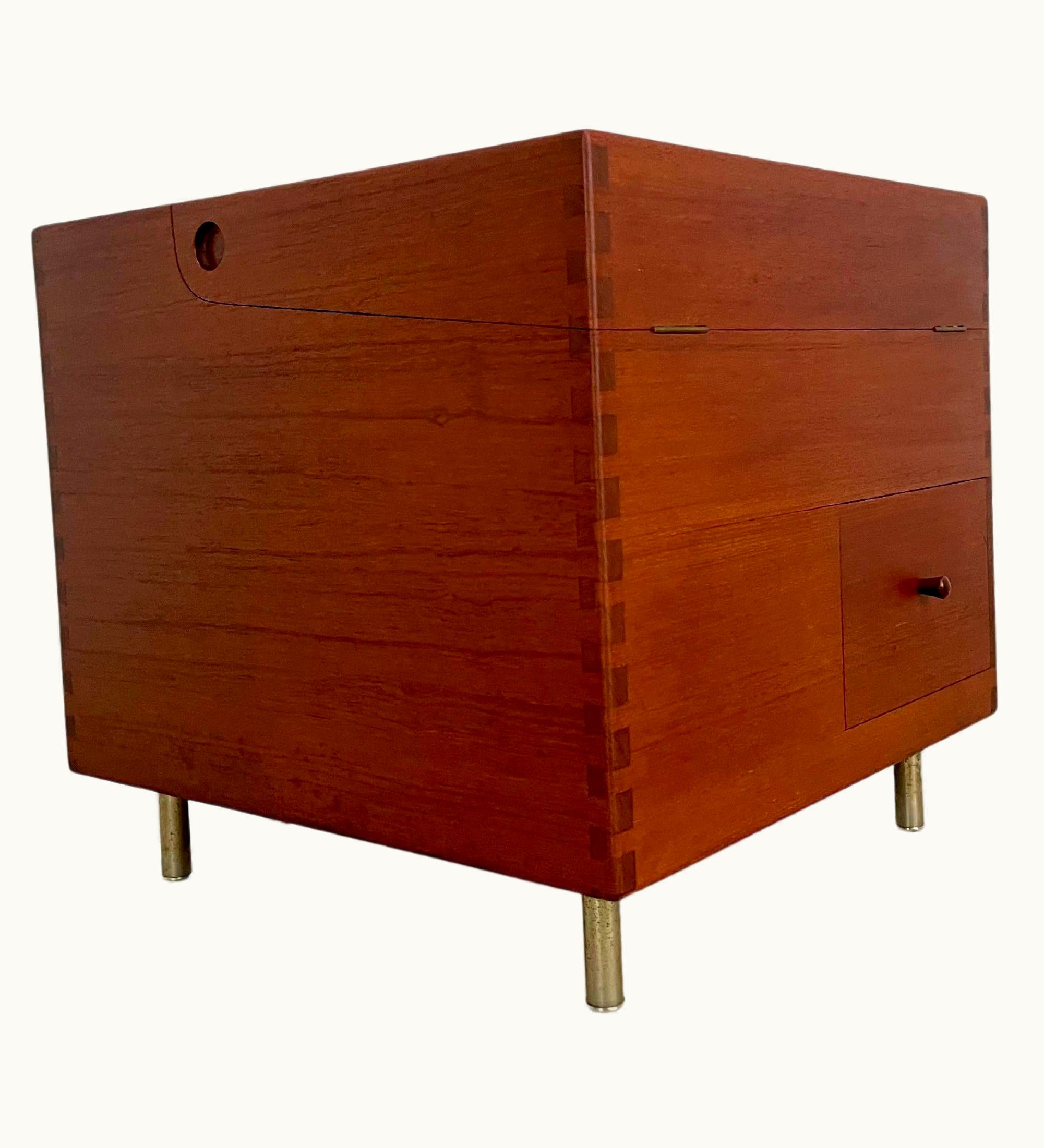Share:
0
💎INVESTMENT PIECEINVEST

The below picture is for illustration and reference purposes only.For illustration purposes only.
Product Details
Retail Price:--
Buy Now:--
Year:--
GLINT Product Ref:GL0191210
Brand Product Ref:--
Product Description
In the mid to late 1950s, Hans Wegner collaborated with Carl Hansen and Andreas Tuck, whose families were long-time friends in Odense. They expanded their collaboration to include an upholstery specialist, a cabinetry specialist, and a factory specialized in seating with loose cushions. Wegner's designs were in high demand in the American export market, particularly when executed in teak instead of native Danish woods like oak and beech. With the advent of carbide cutting blades for heavy woodworking machinery, teak could be worked in larger volumes, inspiring Wegner to design a celebration of the wood and the new machinery. His design was a simple cube made primarily of solid teak with rows of exquisite dovetail joints and a curving lid with carved handles. The drawer was cut from the front, and the steel legs appeared to make it float. The Bar Cube was a showcase of the new machine work, produced by Andreas Tuck rather than Johannes Hansen, Wegner's traditional hand cabinetmaker. However, the high cost of solid teak and the unrecognizable language of dovetail joints in veneer put off the buying public, making the Bar Cube a brief success only among a few. While its function worked well as a dry bar or side table, the design's beauty was more compelling.
Additional Product Details
Inches (L x W x H)6 x 4 x 2
Centimeters (L x W x H)15 x 10 x 5
Weight (in pounds)0.175
GLINT Expert Verified
GLINT Verified is our own designation and means that we inspect every item, every time.
GLINT Buyer Protection
Learn more →Dispute Resolution
We help resolve issues quickly and fairly.
Authenticity Guarantee
Every item is verified for authenticity.
Secured Payments
Your payment is held until the item is verified.
All Sellers Are Verified
We verify each seller to ensure trust and safety.
Have Questions?
Get instant answers from our AI assistant
Quick questions:
💡 Ask about pricing, authenticity, availability, condition, or anything else about this product
Payment options
Guaranteed safe & secure checkout powered by Stripe
